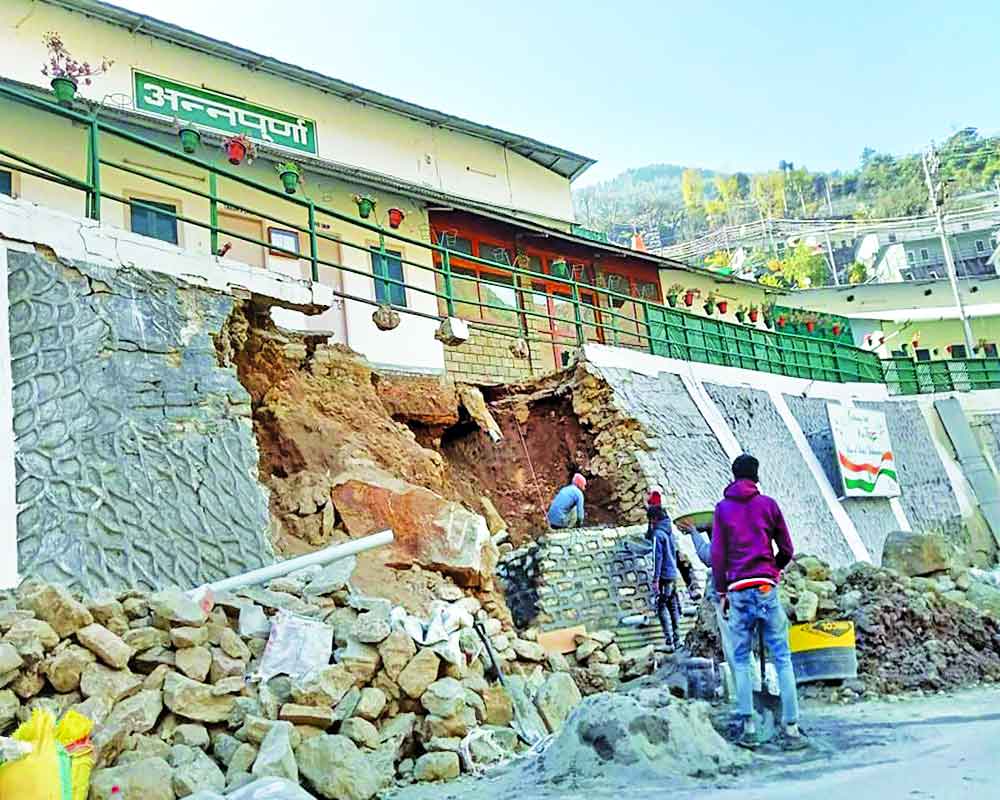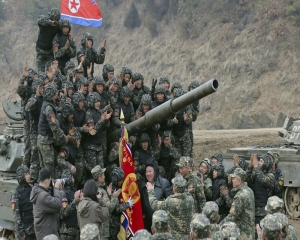If plundering of hill is not stopped, disasters like in Joshimath are bound to happen in the fragile ecosystem of the lower Himalayas.
The fragile Himalayan mountains of Uttrakhand in the town of Joshimath in Chamoli district, located at an altitude of 6,150 feet, is famous as a gateway to Badrinath, one of the holy shrines ‘Char Dhams’ as well as the Sikh pilgrimage center at Hemkund Sahib, skiing attraction of Auli and the ‘Valley of Flowers’ UNESCO World Heritage site, is in news for wrong reasons - it is sinking rapidly all due to human-induced causes. On January 11, 2023, 723 houses in all the nine wards of the town had developed major or minor cracks on the floors, ceilings, and walls. Consequently, 145 families have been moved to safer locations. Joshimath has a population of 23,000 and is heavily built, with hotels, resorts, and a busy market catering to tourists, pilgrims, trekkers, and army and Indo-Tibetan border Police (ITBP) personnel. It emerged as a place of strategic importance in 1962 because it leads to villages along the Indo-China border and falls en route to Barahoti, a disputed territory along the border.
As per surveys conducted by experts, Joshimath falls in Zone V, India’s highest-risk seismic zonation scheme and situated between two thrusts, the Main Central Thrust (MCT) and the Vaikrita Thrust (VT) and occupies a seismically active terrain. The town is highly active in terms of slope mobility because it is built on the deposits of an old landslide which means that the slopes can be destabilized even by slight triggers. Climatically, it lies in a region that frequently receives high-intensity, focussed rainfall, is prone to extreme weather, and could trigger landslides because the slopes are precariously balanced. Alarm bells in the region had begun ringing about five decades back when it was part of erstwhile Uttar Pradesh when the government constituted a committee led by the then Garhwal Commissioner, Mahesh Chander Mishra to investigate the cause of land subsidence in the area. The committee’s report of 1976 warned against heavy and unscientific construction in the town. It was clearly indicated that “Joshimath is a deposit of sand and stone…...hence was not a suitable place for the coming up of a township. Vibrations produced by blasting and heaving traffic will also lead to disequilibrium in natural factors”. Subsequently, several studies flagged similar concerns, but the alarm bells went unheard and timely warnings were ignored.
In fact, on the contrary, Joshimath continued to develop exactly against the way the Mishra committee had advised. Successive governments, however, have sanctioned bigger projects – highways, hydropower, infrastructure development, and haphazard development of townships with no regard for environmental fallout. As normally attributed, the local people and climate change are responsible for the disasters. However, in his case, the policy-led disasters are “Made in Delhi”. This is apparent from the decision of sanctioning large hydropower projects by the Centre even after the 2013 Kedarnath tragedy. The armed forces and the state and local authorities, in their overenthusiasm, to have a smoother, faster, all-weather connectivity for pilgrims, and tourists, ignored the government’s own recommended “best practices norms” The construction of highways and railway tracks has now become a prime cause for landslides and their occurrences have doubled over the years making the hill slopes extremely unstable. Consequently, recurring landslides have gone up leading to erosions and land shifts.
According to a report published in Current Science in 2010, “Tapovan-Vishnugad hydropower tunnel that passes just below Joshimath, which is sitting on an old glacial deposit, could be contributing factor to this phenomenon. During the construction of the tunnel, a boring machine perforated a water-bearing stratum on the left bank of the Alaknanda river near Shelong village, leading to the discharge of 60-70 million liters per day. This must have led to the gradual depletion of pore pressure within the sediment leading to aquifer compaction and settling of the ground. The role of pore pressure in determining slope stability needs to be studied further in the region. Although the officials of NTPC who are responsible for the construction and maintenance of the 520 MW hydropower project refute these allegations. However, many residents believe that the town would not be facing the current crisis if not for the hollowing of the ground beneath their feet. Moreover, construction along the Helang bypass to build an all-weather road is also believed to have disturbed the mountain’s foundation.
Similar sentiments are echoed by the members of Joshimath Bacho Sangharsh Samiti, which have been protesting against projects detrimental to Joshimath since 2004 and are currently leading protests demanding adequate relief and rehabilitation for Joshimath’s residents whose houses have been damaged. They felt that water released in 2009 is a major contributor to the subsistence and the water laden with muck and some volatile chemicals, began surfacing in the town’s Marwari from the February 7, 2021 flood that would have entered into the (under construction) tunnel of the Tapovan Vishnugad project and is now surfacing in Joshimath. However, there have been no scientific studies establishing links between the puncture and the subsidence in Joshimath. Refuting these allegations, the NTPC has denied any role in the ongoing crisis. The real cause of this disaster remains a sort of mystery for the authorities as well as the public.
(The writer is a senior journalist and Chairman of the Panwar Group of Institutions, Solan, Himachal Pradesh. The views expressed are personal. This is the first part of two-part series on the Joshimath disaster; to be continued)


























